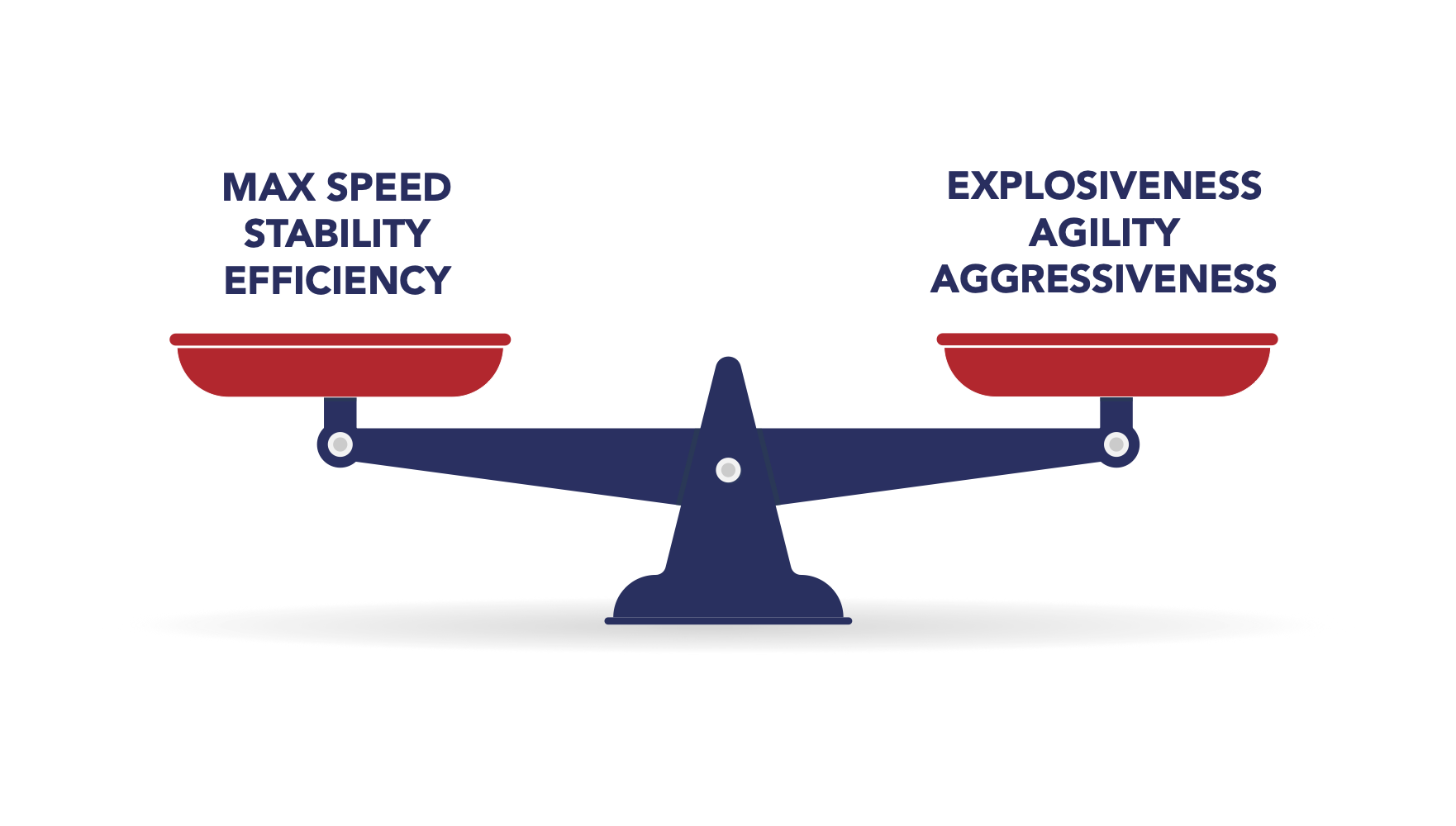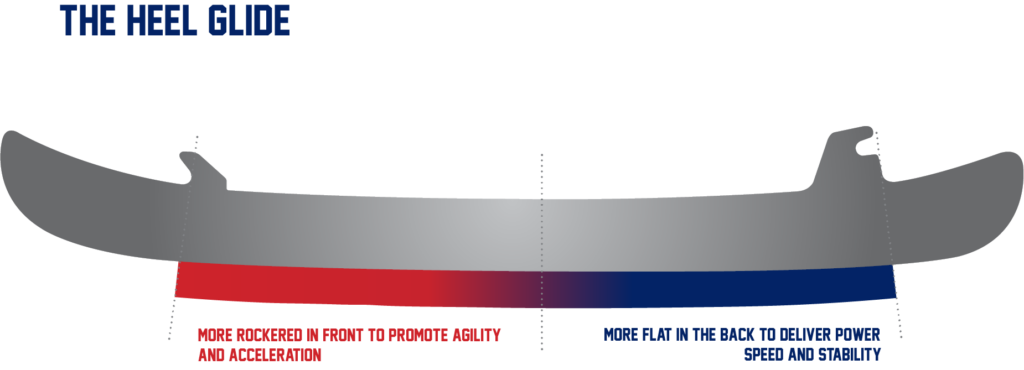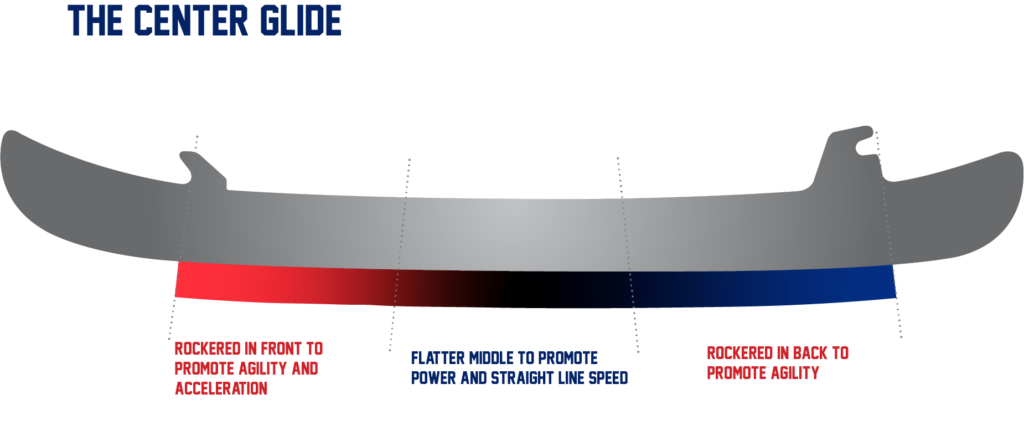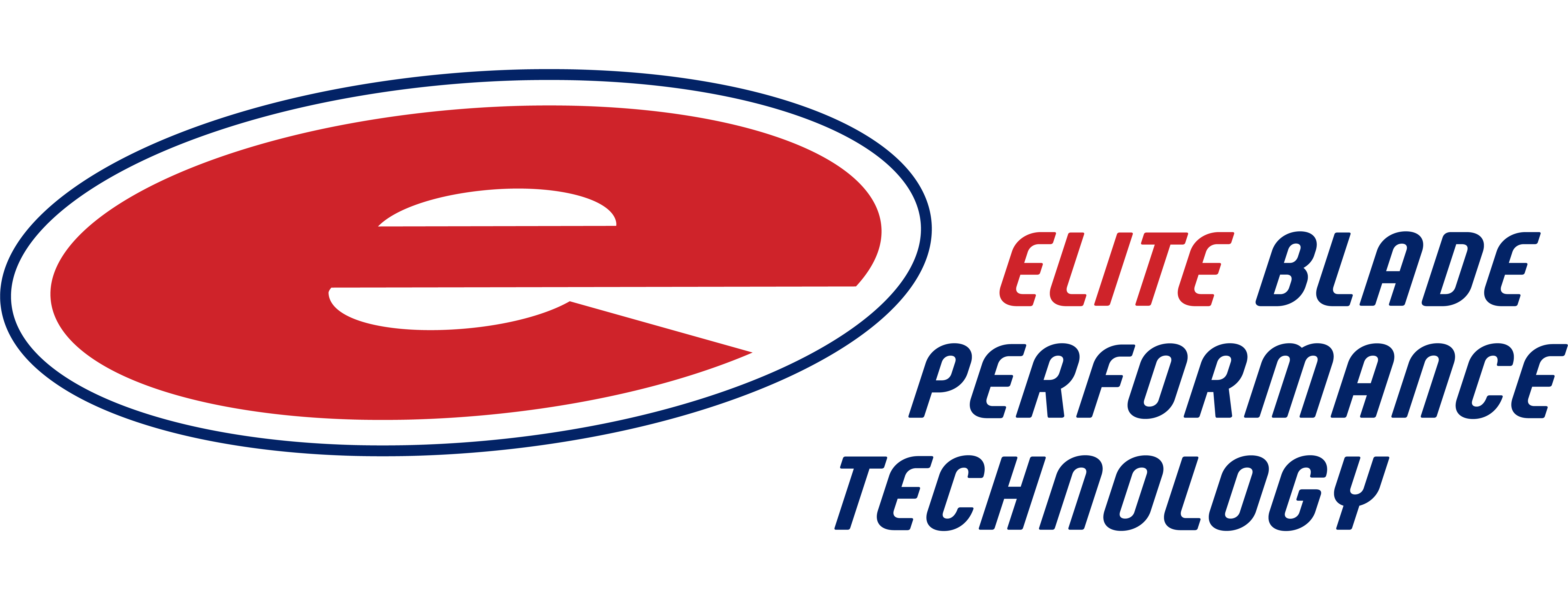PERFORMANCE PROFILING
agility, acceleration, speed, stability
Performance profiling
More than anything else, the quality and shape of your blade profile – the curve of your blade from toe to heel — will determine your agility, speed, your power, your performance.

Most stock blades come with a single curve profile, i.e. a 9 or a 10 foot radius. That means the effective skating surface of the blade is shaped in an arc that represents a 10’ circle.
The challenge with the single curve profile is that it always involves trade-offs. Make it flatter and you will increase your speed and stability but lose agility and initial acceleration. Make it more curved and you will increase agility and explosiveness but lose speed and stability.
what is performance profiling?
Performance profiling is about strategically combining several curves on one blade to enhance skating performance. A performance profile might, for example, add a smaller radius curve at the front of the blade, to increase agility and acceleration, while maintaining a larger curve at the back for speed and stability.
With a performance profile, players don’t need to choose between agility and stability, or between speed and explosiveness. By adding different curves in a combined sequence, performance profiles allow players to have it all — more agility, more speed, more stability, and more acceleration.

Types of profiles


There have been many performance profile formulas tried over the years, from CAG and Prosharp to Elite. It is worth finding the performance profile that feels right for your game and skating style.
Here’s a simple way to understand the world of performance profiles. Most profile combinations fit into two broad categories that share common characteristics. We refer to these as Heel Glide profiles and Center Glide profiles.
Heel Glide profiles are flatter toward the heel and more curved toward the toe. The Center Glide profiles flatten an area under the middle of the blade to provide more contact with the ice surface, while the toe and heel sections are more rockered. In our extensive on-ice testing with elite players, we find most skaters will prefer one family or the other. The most popular performance profiles that Elite offers are the Polaris, the SCS1 and the SCS.
HOW TO CHOOSE YOUR PROFILE
There is no magic formula to choosing the right profile. We could tell you that if you are 6’2” and play defense you should choose the SCS2 and if you are an agile forward choose the Polaris, but it really is a personal choice that depends on your skating style and personal preferences. The best way to choose a profile is to try a few on the ice and determine what feels best to you.
If you can’t get out on the ice, talk to the experts at an Elite Blade Performance Centre who can help you make a decision based on the attributes you are looking for.
ELITE has the widest selection of performance profiles available and very knowledgeable staff who can help you make the right choice for your playing style.
To help you, we’ve created detailed descriptions of all our profiles, with their attributes.

HOW OFTEN SHOULD YOU PROFILE?
If you are getting your blade sharpened by hand, you will be changing your profile every time you sharpen. You will want to reprofile at least a few times a season. If you bring your blades to an Elite blade performance center we can put your blade on our light box and let you know if your profile is intact or whether you need to reprofile.
If you are getting your blades sharpened on the Elite E-S4 automated sharpener, you don’t need to reprofile your blades. The E-S4 is the only sharpener that can read the shape of your blades and perfectly maintain your profile integrity. With the Elite sharpener your blade profile will remain intact for the life of your blades.
WHAT THE PROS SAY



